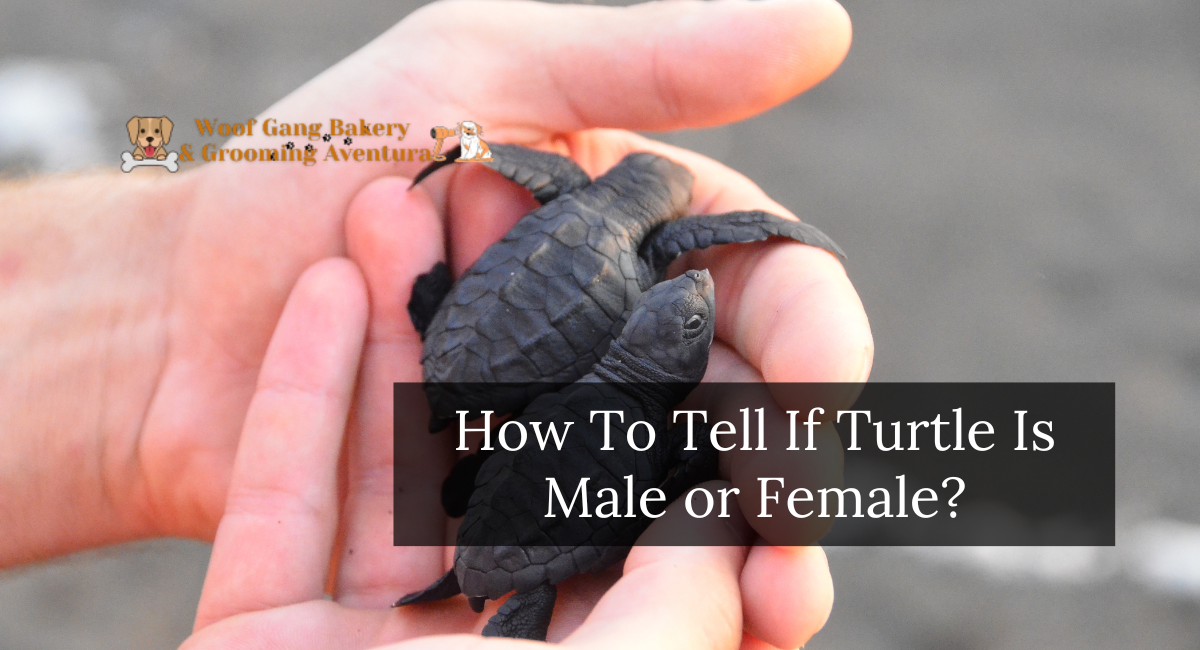Turtles, with their distinct and often cryptic features, pique the interest of both pet enthusiasts and nature lovers.
One remarkable element of turtle biology is the capacity to identify their gender. While it may not be as obvious as in other species, determining whether a turtle is male or female is an interesting procedure.
In this article, we’ll look at the tiny but essential clues that can help you determine the gender of your shelled buddy. Discover the secrets of your turtle’s biology and gain insight into its fascinating world.
How To Tell If Turtle Is Male Or Female?
Turtles have a unique morphology that distinguishes them from other living animals. With most of a turtle’s anatomy hidden inside its shell, determining its gender requires an examination of size, tail, fingernails, and plastron shape.
With practice, these signs can be seen from a distance, allowing the sex of a wild turtle to be determined. Here are some factors from which you can tell if the turtle is male or female:
Fingernails
The quickest technique to determine the gender of a red-eared slider (Trachemys scripta) or painted turtle (Chrysemys picta) is to examine the animal’s fingernails.
These animals have female-choice mating systems, in which males compete for the attention of a female. Males will use their fingernails to stimulate a female’s cheeks and assess receptivity.
As a result, whereas females have comparatively short fingernails, males have exceptionally long fingernails to support this behavior.
Tails
Though identifying a turtle’s gender by inspecting its tail is not as simple for novices as other approaches, it is the most consistent indicator across a wide range of species.
Male turtles typically have longer, thicker tails than female turtles to contain the male’s phallus. In addition, the vent or cloacal opening will be closer to the base of the tail in females and closer to the tip of the tail in males.
Size
Males and females in several turtle species have differing growth rates and adult sizes, which can be used to determine gender. Females of many aquatic species, such as red-eared sliders and soft-shell turtles (Apalone sp.), grow larger than males hence extremely huge creatures are always female.
Unfortunately, this is not always a useful criterion; northern populations of stinkpot turtles (Sternotherus odoratus) have larger males than females, whereas southern ones have the opposite trend. Other species, such as snapping turtles (Chelydra serpentina), typically have larger males than females.
Shell Shape
Males of terrestrial species, such as box turtles (Terrapene carolina) and tortoises (Geochelone sp.), typically have a concave plastron that aids in mating behaviors. This is not typically the case for aquatic species that breed while swimming, such as sliders.
However, there are rare outliers, particularly among semi-aquatic species such as the Blanding’s turtle (Emydoidea blandingii) and some that move along the bottom of the water, such as the stinkpot turtle.
If You Want to Make A Turtle Pet, Which Gender Is Best For You?
Choosing the appropriate gender for your pet turtle requires considering a variety of criteria, such as their behavior, size, and specific care requirements. Here are some considerations to assist you in making your decision:
Behavioral Differences
Males: Male turtles may be more territorial and violent during the breeding season. They may exhibit courtship behaviors and become more active in their search for a mate.
Females: Female turtles are less territorial and combative, making them better suited to a calmer, less competitive environment.
Size Considerations
Some turtle species have size disparities between males and females. Consider the size your turtle is predicted to reach when fully grown and select a gender that matches your preferences for the pet’s size.
Reproductive Considerations
If you don’t want to deal with probable egg-laying and nesting activities, choose a male turtle. Female turtles can lay eggs without a mate and may engage in nesting activity, which necessitates careful supervision.
Pet Interaction
Consider how you prefer to engage with your pet. If you appreciate studying courtship activities and the possibility of reproducing, a pair of opposite-gender turtles may be ideal. If you prefer a more relaxed setting, keeping turtles of the same gender may be a suitable option.
Care And Space Requirements
Some turtle species require specific care dependent on their gender. For example, if you have a female turtle, you may need to provide an appropriate nesting environment. To ensure that you can meet the care requirements of the turtle species you are interested in, conduct research on their individual needs.
Lifestyle And Commitments
Consider your own lifestyle and willingness to care for a pet turtle. Both male and female turtles can make excellent pets, but understanding their distinct behaviors and demands will help to ensure a good and enjoyable relationship.
Veterinary Considerations
Regular veterinary examinations are required for the health of your pet turtle. If you are confused about the gender or have concerns about reproductive health, see a reptile veterinarian for advice.
The appropriate gender for your pet turtle is determined by your personal tastes, experience, and desire to meet the gender-specific needs. Before making a decision, extensively investigate the turtle species you are interested in and confirm that you can give enough care for your potential shelled buddy.
Determining the gender of a turtle requires a complex method. Whether you use physical attributes, behavioral signals, or expert aid, the objective is to collect a variety of evidence to ensure proper identification. Unraveling the riddles of turtle gender not only broadens our understanding of these extraordinary species, but also helps to ensure their survival.
Thanks for reading. I hope you find it interesting.




